This article was medically reviewed by Thomas Wright, MD. Dr. Wright is board certified in Internal Medicine and Phlebology in Missouri with over 25 years of experience. He is one of the first 200 surgeons in the United States to become a diplomat by the American Board of Venous and Lymphatic Medicine. He completed his MD at the University of Missouri and his residency at the University of Alabama Birmingham in 1995. He is a Fellow of the American College of Phlebology and the American College of Physicians. He is a member of the American Society for Laser Medicine and Surgery, American Academy of Cosmetic Surgery, and the American Medical Association.
There are 10 references cited in this article, which can be found at the bottom of the page.
This article has been viewed 574,465 times.
There are several reasons people may want to temporarily numb their skin. This includes reducing pain after an injury or preparing for an invasive procedure at the doctor’s office. Luckily, there are many options to chose from so you can find what will work best for your situation.
Steps
Relieving Pain
-
1Use an ice pack. When you cool your skin, it constricts the blood vessels. This reduces the blood flow to the area and can relieve swelling, irritation, and muscle spasms. This is particularly good for soothing bruises and minor injuries.[1]
- If you don’t have an ice pack already prepared in the freezer, you can use a bag of ice cubes or frozen vegetables.
- Always wrap the ice pack in a towel instead of putting it directly on your skin. This will help prevent frostbite. [2]
- After 20 minutes, remove the ice pack from your skin and let your skin warm up. After 10 minutes you can put it on again if you need to.
-
2Numb small areas with topical anesthetic creams. These creams are often available over-the-counter and can soothe sunburns, minor burns, insect bites, stings, and minor abrasions. Always consult your doctor if you are pregnant, breastfeeding, treating a child or a senior citizen, or are taking other medications, herbal remedies, or supplements that could interact. Read and follow the instructions on the packaging.[3]
- You can usually buy these products at your local pharmacy as sprays, ointments, creams, patches, and pre-prepared bandages.
- The medications may contain: benzocaine, benzocaine and methol, butamben, dibucaine, lidocaine, pramoxine, pramoxine and methol, tetracaine, or tetracaine and methol. If you are unsure about the dosages or how often to apply it, consult your doctor. Your doctor will be able to make recommendations based on your particular condition and medical history.
- Check the expiration dates. Do not use expired medications.
- Stop using these medications and consult your doctor if you see no improvement after a week, the area gets infected, develops a rash, or starts burning or stinging. Symptoms of an overdose include blurred vision, confusion, seizures, dizziness, feeling too hot, too cold, or numb, headache, sweating, ringing in your ears, irregular or slow heartbeat, difficulty breathing, sleepiness. If you show these symptoms, go to the doctor immediately or call an ambulance.[4]
Advertisement -
3Take oral painkillers. Non-steroidal anti-inflammatory drugs can relieve pain from arthritis, muscle pain, tooth pain, fever, gout, back pain, headaches, and menstrual cramps. These medications can generally be purchased over-the-counter at local pharmacies. Many can provide relief within a few hours. Do not use them for more than a few days without consulting your doctor. Always consult your doctor before using these medications if you are pregnant, breastfeeding, treating a child, or on other medications, herbal remedies, or supplements.[5]
- Common medications include: Aspirin (Anacin, Bayer, Excedrin), ketoprofen (Orudis KT), ibuprofen (Motrin, Advil, Nuprin), naproxen sodium (Aleve). Aspirin should never be given to children or teenagers because it is associated with Reye’s syndrome.
- Do not take these medications without first consulting a doctor if you have high blood pressure, diabetes, kidney disease, liver disease, allergies to these medications, ulcers, bleeding problems, high alcohol intake, heart problems, asthma, or are on other medications that may interact such as warfarin, lithium, heart medications, arthritis medications, vitamins, and others.
- Common side effects include gas, bloating, heartburn, stomach discomfort, vomiting, diarrhea, and constipation.[6] If you have these or any other side effects, contact your doctor immediately.
Preventing Future Pain
-
1Ask your doctor about cooling sprays. Ethyl chloride (Cryogesic) can sprayed onto skin right before a painful procedure. The liquid is sprayed onto your skin, which will then feel cold as it evaporates. Your skin will warm up within a few minutes. The spray is only effective as pain relief for as long as it takes your skin to warm up.
- This may be done immediately before a child receives a medical treatment that involves using a needle. It can be a good substitute for other topical anesthetics if the child is allergic to them.
- Do not apply the cooling spray more often or in greater amounts than recommended by the doctor. It can cause frostbite. [7]
- Always read and follow the instructions on the packaging. Consult a doctor before applying it to a child or if you are pregnant or breastfeeding.
- Keep it out of your eyes, nose, mouth, and open wounds.
-
2Consult your doctor about topical creams. If your doctor expects that you will need pain relief from a procedure you will be undergoing, you may be given an anesthetic to apply shortly before the procedure. Your doctor may ask you to cover the medication with a bandage while it is absorbed into your skin. Do not apply it to your nose, mouth, ears, eyes, genitals, or broken skin. Two frequently used types include:
- Tetracaine (Ametop Gel). This gel is smeared on the skin a half hour to 45 minutes before the procedure for which you need to be numbed. You can remove it right before the procedure. You will be numb for up to six hours. It may make your skin red where you applied it.
- Lidocaine and prilocaine(EMLA cream). You can apply this an hour before the procedure and then remove it right before the procedure. It will be effective for up to two hours. A side effect is that it may make your skin look white.
-
3Discuss other types of anesthesia with your doctor. If your doctor thinks that local, topical anesthetics might not be sufficient, he or she may suggest numbing larger areas of your body. This is commonly done for procedures which may go below the skin, childbirth, or surgeries. Possibilities include:[8]
- A regional anaesthetic. Regional anesthetics do not put you to sleep, but they numb a larger area of your body than local anesthetics. [9] You may receive these as local injections. When a woman receives epidural anesthesia during childbirth, this is a regional anesthetic which numbs the lower half of her body.
- General anesthesia. This is done for many surgical procedures. You may receive the anesthetic either as an intravenous medication or inhale it as a gas. Side effects can include: nausea, vomiting, dry or sore throat, chills, tiredness.[10]
References
- ↑ https://www.urmc.rochester.edu/encyclopedia/content.aspx?ContentTypeID=1&ContentID=4483
- ↑ https://www.urmc.rochester.edu/encyclopedia/content.aspx?contenttypeid=90&contentid=P02820
- ↑ http://www.mayoclinic.org/drugs-supplements/anesthetic-local-topical-application-route/description/drg-20070024
- ↑ http://www.mayoclinic.org/drugs-supplements/anesthetic-local-topical-application-route/side-effects/drg-20070024
- ↑ https://my.clevelandclinic.org/health/drugs_devices_supplements/hic_Non-Steroidal_Anti-Inflammatory_Medicines_NSAIDs
- ↑ https://my.clevelandclinic.org/health/drugs/11086-non-steroidal-anti-inflammatory-medicines-nsaids
- ↑ https://www.gosh.nhs.uk/conditions-and-treatments/procedures-and-treatments/topical-anaesthetics/
- ↑ http://www.nhs.uk/Conditions/Anaesthesia/Pages/Introduction.aspx
- ↑ https://www.uofmhealth.org/health-library/rt1574
About This Article
An easy way to numb your skin if you have a bruise or minor injury is to wrap an ice pack or bag of frozen vegetables in a cloth and apply it to the area that hurts. Make sure to take the ice pack off after 20 minutes and let your skin warm up before putting it on again, or else you might damage your skin. Another way you can numb your skin is by using an over the counter cream that contains an anesthetic like benzocaine, butamben, or lidocaine. Opt for these creams if you have sunburn, insect bites, stings, or minor abrasions. If you’re not sure about the dosage you should use or how often to apply, ask your doctor and they can make a recommendation based on your medical history. For more tips from our Medical co-author, including how to prevent future pain from medical procedures, read on.
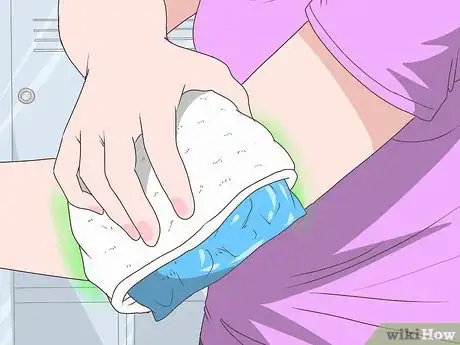

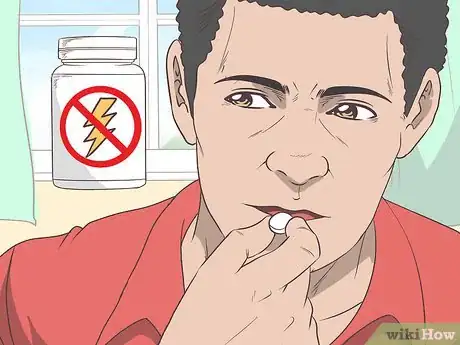





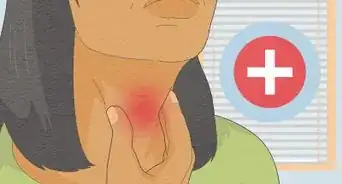








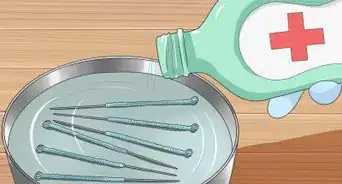












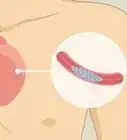




































Medical Disclaimer
The content of this article is not intended to be a substitute for professional medical advice, examination, diagnosis, or treatment. You should always contact your doctor or other qualified healthcare professional before starting, changing, or stopping any kind of health treatment.
Read More...